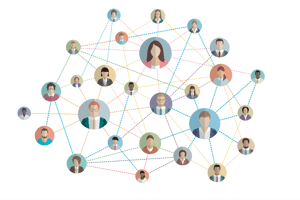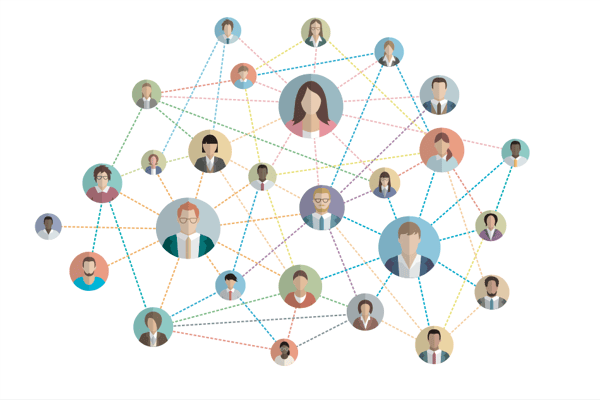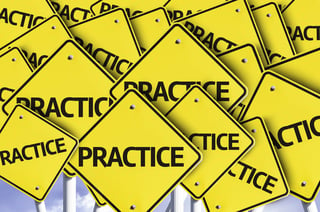Con tanto cambio a nuestro alrededor, hemos tenido que buscar y crear herramientas para adaptarnos a nuestras rutinas diarias. Estar guardados en un lugar que se transformó de una cálida casa a oficina, gimnasio, mall online y cine, no ha sido un proceso fácil. Incluso a ratos, nos deja la sensación de no poder aguantar más así. La tecnología nos ha ayudado a continuar trabajando y estar conectados a nuestros seres queridos y amigos, pero los desafíos de este tipo de conexión siguen siendo grandes.
“This person really upsets me!” is a very common expression; the anger emotion arises when something or someone gets us off balance. This change from our “not angry” or relaxed state to an “angry” state, is almost unnoticeable. Of course, we know when we are angry or very angry, but when we are aware, we are already beyond the transition point from relaxed to angry. The anger energy is so strong that when it happens, we don’t realize it,. It is like a shock in which we gain awareness once we are well into the anger and in the strongest cases not even in that moment but after it goes away.
For the last 20 years I have been an avid meditator, skipping a few days here and there but mostly sticking to give myself the gift of 30 minutes of relaxing calm every morning training my brain. When I learned to meditate, I remember in one of the instructions from a guided meditation the phrase: “total attention voluntary, continued and concentrated in the object of your attention that is your breathing”.
Remote leadership is not a new thing but working from home, hybrid work and teams combining different working environments is still in constant evolution. Did you know that 1 out of 4 employees are already preparing to look for a new employment opportunity? And that almost half of the workers globally are considering leaving their current employers by the end of the year? (Source: McKinsey “It’s time for leaders to get real about hybrid” July 2021)
From the board room table to the dining room table, it’s what I tell most of my clients, the behaviors they are working hard to demonstrate as leaders carry over to their team at home. The team’s faces, activities and expectations are different, but we need to show up in even more important ways, we need to prioritize how we spend our time with the team at home the way we do with the team at work. How are you prioritizing your time? Are you making sure you are being mindful with how you are spending your time?
With constant changes around us, we've had to embrace our own adaptation skills for our daily routines. Being contained in a place that transformed itself from a cozy home to office, gym, online shopping plaza and movie theater, has not been an easy process and at some times feels like we cannot take it anymore. Technology has helped to stay working and “in touch” with loved ones and friends but the challenges of this type of connection are big.
I think of all the times we are asked to share ideas, to help solve problems, to brainstorm new ideas, how many of those times do we hold ourselves back? How many of those times do we question our ideas? In a conversation with a friend, I asked her to describe a leader she really admired that was inspiring and supportive. She told me that she considered herself lucky because she did have an example for me. This leader would often sit with the team to brainstorm, and ask many questions to get her team to engage and just say whatever was on their mind. She would bring a blank canvas to a meeting and challenge her team to fill it. The idea was meant to inspire them and to challenge them to think outside of the box, but also to trust that she was listening. They would come up with the most amazing ideas that they could. The sky was the limit. And in our conversation my friend and I talked about the importance of encouraging and engaging our teams to want to share their ideas, their thoughts, to question processes and investigate possibilities. What would you do if you were given a blank canvas? How would you fill the space? What would you be willing to share? Express?
 “Esta persona me hace enojar” es una expresión común; el enojo surge cuando alguien nos altera. Esta transición de nuestro estado “no enojado” a “enojado” es casi imperceptible.
“Esta persona me hace enojar” es una expresión común; el enojo surge cuando alguien nos altera. Esta transición de nuestro estado “no enojado” a “enojado” es casi imperceptible.
 Often situations in life can undermine our confidence, frustrate us and feel like obstacles that are difficult to overcome. Our morale decreases; the energy, excitement and passion we put into a new activity or enterprise is affected and replaced by a concern for failure, by a shadow, that continues putting us down and lowers our performance and our rhythm. We lose that spark that we envy in all of those who are excited to start something with a passion for success.
Often situations in life can undermine our confidence, frustrate us and feel like obstacles that are difficult to overcome. Our morale decreases; the energy, excitement and passion we put into a new activity or enterprise is affected and replaced by a concern for failure, by a shadow, that continues putting us down and lowers our performance and our rhythm. We lose that spark that we envy in all of those who are excited to start something with a passion for success.
 Con frecuencia las situaciones de la vida pueden mermar nuestra confianza, frustrarnos, cansarnos y sentirse como obstáculos difíciles de vencer. Nuestro ánimo decrece, la energía, emoción y pasión que ponemos a una nueva actividad o empresa se afecta y se reemplaza por una preocupación del fracaso, por una sombra que nos desanima mas y que baja nuestro desempeño y nuestro ritmo de actividad, perdemos esa chispa contagiosa que envidiamos en todo el que está emocionado por iniciar algo con la pasión del éxito.
Con frecuencia las situaciones de la vida pueden mermar nuestra confianza, frustrarnos, cansarnos y sentirse como obstáculos difíciles de vencer. Nuestro ánimo decrece, la energía, emoción y pasión que ponemos a una nueva actividad o empresa se afecta y se reemplaza por una preocupación del fracaso, por una sombra que nos desanima mas y que baja nuestro desempeño y nuestro ritmo de actividad, perdemos esa chispa contagiosa que envidiamos en todo el que está emocionado por iniciar algo con la pasión del éxito.
 El tiempo no es dinero. El dicho universal de “el tiempo es dinero” se hizo famoso por Benjamín Franklin cuando comparo minutos y horas con chelines y libras.
El tiempo no es dinero. El dicho universal de “el tiempo es dinero” se hizo famoso por Benjamín Franklin cuando comparo minutos y horas con chelines y libras.
 Time is not money. The universal dictum of “time is money” was made famous by Benjamin Franklin when he equated the passing minutes and hours to shillings and pounds.
Time is not money. The universal dictum of “time is money” was made famous by Benjamin Franklin when he equated the passing minutes and hours to shillings and pounds.
 “No es personal” es una frase de uso común cuando estamos haciendo comentarios o compartiendo malas noticias con alguien, normalmente sobre algo relacionado con el trabajo. Sabemos que cuando nos tomamos las cosas personalmente, nuestro cerebro reacciona con nuestro mecanismo de defensa animal que nos protege inmediatamente de cualquier forma de agresión. Incluso si lo que percibimos como agresión son palabras, nuestro sistema genera adrenalina, envía sangre a nuestras extremidades y comienza nuestra respuesta de lucha o huida.
“No es personal” es una frase de uso común cuando estamos haciendo comentarios o compartiendo malas noticias con alguien, normalmente sobre algo relacionado con el trabajo. Sabemos que cuando nos tomamos las cosas personalmente, nuestro cerebro reacciona con nuestro mecanismo de defensa animal que nos protege inmediatamente de cualquier forma de agresión. Incluso si lo que percibimos como agresión son palabras, nuestro sistema genera adrenalina, envía sangre a nuestras extremidades y comienza nuestra respuesta de lucha o huida.
 El amor es un tema complejo cubierto por muchos poemas, libros, películas e historias. Sin duda, una parte intrínseca de nuestra vida, sin importar que trabajo, profesión o negocio tengamos. Siempre habrá un gran enfoque en nuestros seres queridos cuando se trata de nuestra lista de prioridades de tiempo y recursos. Podría ser tu esposo o esposa e hijos, podrían ser tus padres, tus amigos o incluso tu perro, pero a todos nos gusta amar y ser amados.
El amor es un tema complejo cubierto por muchos poemas, libros, películas e historias. Sin duda, una parte intrínseca de nuestra vida, sin importar que trabajo, profesión o negocio tengamos. Siempre habrá un gran enfoque en nuestros seres queridos cuando se trata de nuestra lista de prioridades de tiempo y recursos. Podría ser tu esposo o esposa e hijos, podrían ser tus padres, tus amigos o incluso tu perro, pero a todos nos gusta amar y ser amados.
 “It’s not personal”, is a commonly used phrase when we are either giving feedback or sharing bad news with someone about something at work. We know that when we take things personally our brain reacts with our animal defense mechanism immediately protecting us from any form of aggression. Even if what we perceive as aggression is words, our system generates adrenaline, sends blood to our limbs and starts up our fight or flight response.
“It’s not personal”, is a commonly used phrase when we are either giving feedback or sharing bad news with someone about something at work. We know that when we take things personally our brain reacts with our animal defense mechanism immediately protecting us from any form of aggression. Even if what we perceive as aggression is words, our system generates adrenaline, sends blood to our limbs and starts up our fight or flight response.
 Love is a complex topic covered by so many poems, books, movies and stories. No doubt an intrinsic part of our human life no matter what job, profession or business we have. There will always be a big focus on our loved ones when it comes to our priority list for time and resources. It could be your husband or wife and kids, it could be your parents, your friends or even your dog but we all love and like to be loved.
Love is a complex topic covered by so many poems, books, movies and stories. No doubt an intrinsic part of our human life no matter what job, profession or business we have. There will always be a big focus on our loved ones when it comes to our priority list for time and resources. It could be your husband or wife and kids, it could be your parents, your friends or even your dog but we all love and like to be loved.
 Todos sabemos que la soledad no es nada agradable. Cuando estamos solos y tenemos esa sensación de no estar conectados, las emociones negativas surgen fácilmente e incluso pueden llevarnos al punto de sentirnos deprimidos o completamente desmotivados. ¿Pero estamos haciendo algo al respecto?
Todos sabemos que la soledad no es nada agradable. Cuando estamos solos y tenemos esa sensación de no estar conectados, las emociones negativas surgen fácilmente e incluso pueden llevarnos al punto de sentirnos deprimidos o completamente desmotivados. ¿Pero estamos haciendo algo al respecto?
 We all know that loneliness is not a nice thing. When we are lonely and we have that feeling of not being connected, negative emotions easily arise and can even hold us to the degree of feeling depressed or completely demotivated. But are we reaching out?
We all know that loneliness is not a nice thing. When we are lonely and we have that feeling of not being connected, negative emotions easily arise and can even hold us to the degree of feeling depressed or completely demotivated. But are we reaching out?

“You must hear the very same thing over and over again” my coachee said, as we finished the session.I have to admit, he caught me off guard and caused me to pause. I think one of the things I have learned in my years of coaching through helping and challenging people in different situations, stages of their lives and parts of the world, is that there are no two people that share the exact same situation, thoughts or ideas.
 It is very unfortunate but mother nature reminds us of our fragility from time to time. In September 2017, Greater Houston, the 4th largest city in the United Sates with almost 7 million habitants, was devastated with floods. We have been trapped in our homes with many roads closed and we have witnessed through news, text messages, phone calls and social media how less fortunate friends have been evacuated from their flooded homes.
It is very unfortunate but mother nature reminds us of our fragility from time to time. In September 2017, Greater Houston, the 4th largest city in the United Sates with almost 7 million habitants, was devastated with floods. We have been trapped in our homes with many roads closed and we have witnessed through news, text messages, phone calls and social media how less fortunate friends have been evacuated from their flooded homes.

They say that the 3 top fears for a human being are public speaking, death and dancing in public, and it seems they are in that order. As I have worked as a Coach and consultant with many people and as a manager of teams, I can confirm that public speaking fear is indeed very threatening for many people.
Coaching has become a popular formula for leadership development in organizations and it is migrating from a private engagement for top level executives with their coaches to organizations looking to create a full coaching culture in their workplaces. But what does that mean? Having a coaching culture is not telling your managers to coach better or to practice active listening. Coaching is a personal transformation because it allows everyone to develop a better version of themselves with these principles:
Being a good communicator is more than being able to speak clearly and effectively. There are three things you learn in coaching that can take your communication skills to the next level
Listen. Observe. Accept. Move.
 There is a fine line between constructive criticism and just flat out disapproval. Being on the receiving end can either be helpful or make you defensive. We are all born with the ability to express ourselves; we all know how to display emotions and we all communicate them, unfortunately we are not all equipped with the same ability of knowing exactly when we should communicate certain thoughts, feelings or suggestions, I call it tact. Some are born with it; and others, well sadly it takes a lifetime.
There is a fine line between constructive criticism and just flat out disapproval. Being on the receiving end can either be helpful or make you defensive. We are all born with the ability to express ourselves; we all know how to display emotions and we all communicate them, unfortunately we are not all equipped with the same ability of knowing exactly when we should communicate certain thoughts, feelings or suggestions, I call it tact. Some are born with it; and others, well sadly it takes a lifetime.
 Excuse the title but I couldn’t help myself, I thought getting you to smile a little is good for the soul. I know the title I chose could be interpreted many ways. In this particular case I want to share an activity that can be helpful in generating ideas, sharing thoughts, working out problems, looking at different perspectives, even releasing negative energy. I learned this technique from my coach trainer during my coach certification program, and sad to say, he had to remind me to put it into practice again. I seem to have forgotten the power and relief it can provide.
Excuse the title but I couldn’t help myself, I thought getting you to smile a little is good for the soul. I know the title I chose could be interpreted many ways. In this particular case I want to share an activity that can be helpful in generating ideas, sharing thoughts, working out problems, looking at different perspectives, even releasing negative energy. I learned this technique from my coach trainer during my coach certification program, and sad to say, he had to remind me to put it into practice again. I seem to have forgotten the power and relief it can provide.
 Can this be changed? Can I do something about it?
Can this be changed? Can I do something about it?
I am a firm believer of goals, plans and actions, I am convinced that if I have not gotten something in life, it is because I have not had the discipline to implement a good plan to get it, I think that is empowering. But I also recognize that sometimes some of our energy gets lost on trying to change something that will not change.

